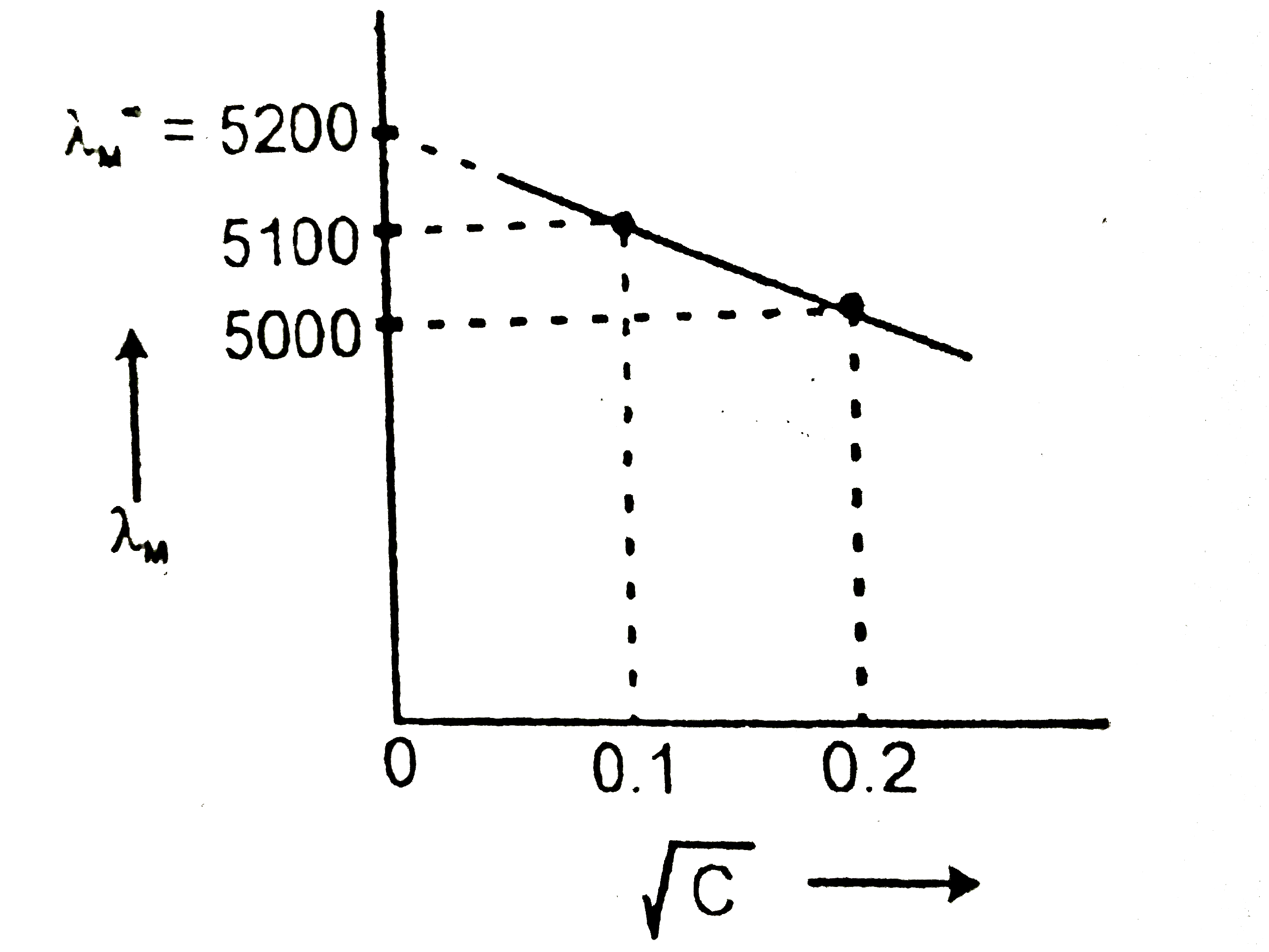Definie conductivity and molar conductivity for the solution of an electrolyte. Discuss their variation with concentration.
Conductivity : Conductivity of a solution is equal to the conductance of a soluton of 1 cm length and cross section area of 1 square cm. It may also be define as athe conductance of in centimeter cube fo the conductor . It is represented by the symbol Kappa (K). Mathematically we can write K=1/p here p is resistively hte unit of K is ohm−1cm−1 or Scm−1 .
The conductivity, K of an electrolytic solution depends on the concentration of the electrolyte , nature of solvent and temperature.
Molar conductivity : Molar conductivity of a solution at a given concentration is the conductance of the volume V of solution A and distance of unit lenght. Therefore ,
⋀m=kC
Or
Molar conductivity increases with decreases in concentration . When concentration approaches zero, the molar conductivity is known as limiting molar conductivity.
The value of the constant 'A' for a given solvent and temperature depends on the types of electrolyte i.e., the charges on the cation and anion produced on the dissociation on the electrolyte in solution.
Topper's Solved these Questions
- XII BOARDSBOOK - XII BOARD PREVIOUS YEAR PAPER ENGLISHCHAPTER - XII BOARDSEXERCISE - Outside Delhi Board: Set-III
10 Videos
- XII BOARDSBOOK - XII BOARD PREVIOUS YEAR PAPER ENGLISHCHAPTER - XII BOARDSEXERCISE - QUESTION PAPER (SECTION-A)
6 Videos
- XII BOARDSBOOK - XII BOARD PREVIOUS YEAR PAPER ENGLISHCHAPTER - XII BOARDSEXERCISE - [SET-1]
36 Videos
- SAMPLE PAPER 2019BOOK - XII BOARD PREVIOUS YEAR PAPER ENGLISHCHAPTER - SAMPLE PAPER 2019EXERCISE - SECTION: D
1 Videos
Similar Questions
Define conductivity and molar conductivity for the solution of an electrolyte. Discuss their variation with concentration.
View Solution(a) Define the terms conductivity and molar conductivity for the solution of an electrolyte.
Comment on their variation with temperature
(b) The measured resistance of a conductance cell was 100 ohms. Calculate (i) the specific conductance and (ii) the molar conductance of the solution
(KCl=74.5gmol−1 and cell constant =1.25 cm−1)
View Solution
Knowledge Check
Limiting molar conductivity of NaBr is
AΛ∘mNaBr=Λ∘mNaCl+Λ∘mKBrBΛ∘mNaBr=Λ∘mNaCl+Λ∘mKBr−Λ∘mKClCΛ∘mNaBr=Λ∘mNaOH+Λ∘mNaBr−Λ∘mNaClDΛ∘mNaBr=Λ∘mNaCl−Λ∘mNaBr
Define molar conductance
View SolutionExpress the relation between.conductivity and molar conductivity of a solution.
View SolutionResistivity is reciprocal of molar conductivity of electrolyte.
View SolutionThe molar conductivity of strong electrolyte
View Solution(a) Apply Kohlrausch law of independent migration of ions, write the expression to determine the limiting molar conductivity of calcium chloride.
(b) Given are the conductivity and molar conductivity of NaCI solutions at 298 K at different concentrations :

Compare the variation of conductivity and molar conductivity of NaCI solutions on dilution. Give reason.
(c) 0.1 M KCI solution offered a resistance of 100 ohms in conductivity cell at 298 K. If the cell constant of the cell is 1.29cm−1, calculate the molar conductivity of KCI solution.
View SolutionAt 0.04 M concentration, the molar conductivity of solution of an electrolyte is 5000Ω−1cm2mol−1 while at 0.01 M concentration the value is 5100Ω−1cm2mol−1. Making necessary assumption (Taking it as strong electrolyte) find the molar conductivity at infinite dilution and write percentage dissociation of strong electrolyte at 0.04 M.
View Solution
At 0.04 M concentration the molar conductivity of a solution of a electrolyte is 5000Ω−1cm2mol−1 while at 0.01 M concentration the value is 5100Ω−1cm2mol−1 making necessary assumption (taking it as strong electrolyte) find the molar conductivity at infinite dilution and also determine the degree of dissociation of strong electrolyte at 0.04M.
View Solution
